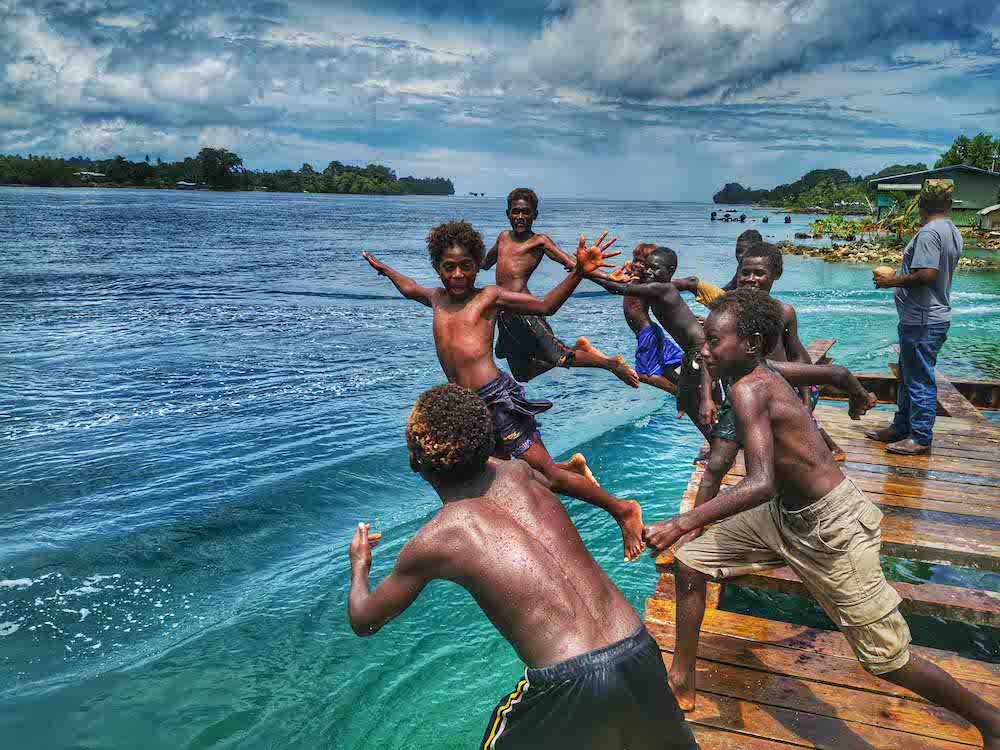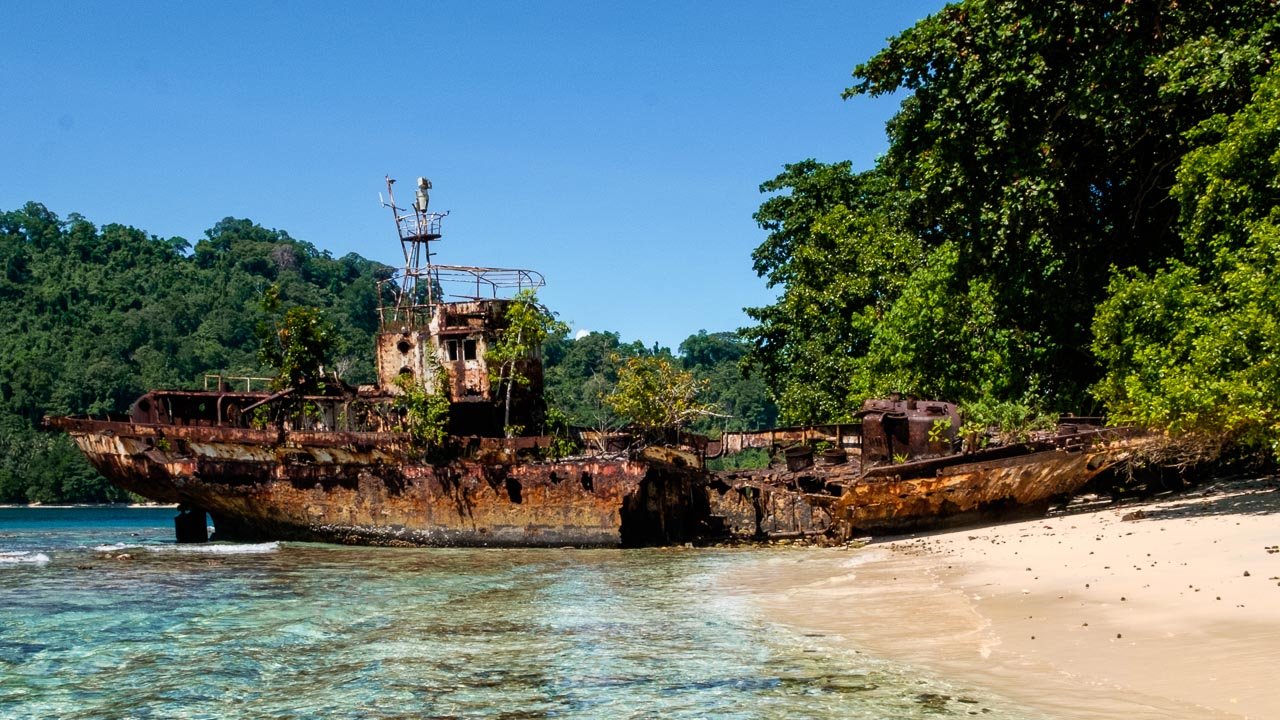
Bougainville Island, a hidden gem nestled in the Pacific, offers a fascinating blend of breathtaking natural beauty, rich cultural heritage, and compelling history.
As the largest island in the Autonomous Region of Bougainville within Papua New Guinea, this island beckons with its untouched landscapes, warm-hearted locals, and intriguing past.
Bougainville Island’s history is as colorful as its vibrant landscapes.
Named after the French explorer Louis Antoine de Bougainville, who sailed past the island in 1768, it has a storied past marked by colonial encounters, copra and cocoa plantations, and significant World War II battles.
Geographically, the island is an ecological marvel, boasting rugged mountain terrains, lush rainforests, and serene coastal lines.
With the active volcano, Mount Bagana, providing a dramatic backdrop, Bougainville Island is a naturalist’s paradise.
In the tapestry of the Pacific region, Bougainville Island plays a pivotal role, both historically and in contemporary times.
The island’s rich deposits of copper once fueled its economy and led to significant socio-political events, including the Bougainville conflict in the late 20th century.
Today, Bougainville is navigating its path towards peace and autonomy, with a referendum in 2019 overwhelmingly supporting independence from Papua New Guinea.
This journey towards self-determination places Bougainville at a crucial juncture in the Pacific, showcasing its resilience and the spirit of its people.
Bougainville Island stands apart for numerous reasons. Its biodiversity is unparalleled, with endemic species and untouched habitats that are a haven for ecologists and nature lovers.
Culturally, the island is a mosaic of languages, traditions, and customs, with over 20 indigenous languages spoken.
The matrilineal society, where lineage and land rights are passed down through women, underscores the unique social fabric of Bougainville.
Moreover, the island’s commitment to sustainable development and eco-tourism sets a precedent in environmental stewardship.
As a destination, Bougainville Island is not just a place to visit but an experience to be lived.
It offers an adventure for the soul, with its enchanting landscapes, resilient history, and the warm hospitality of its people.
For those yearning to explore beyond the conventional, Bougainville Island beckons with the promise of authenticity, beauty, and inspiration.
Getting to Bougainville Island
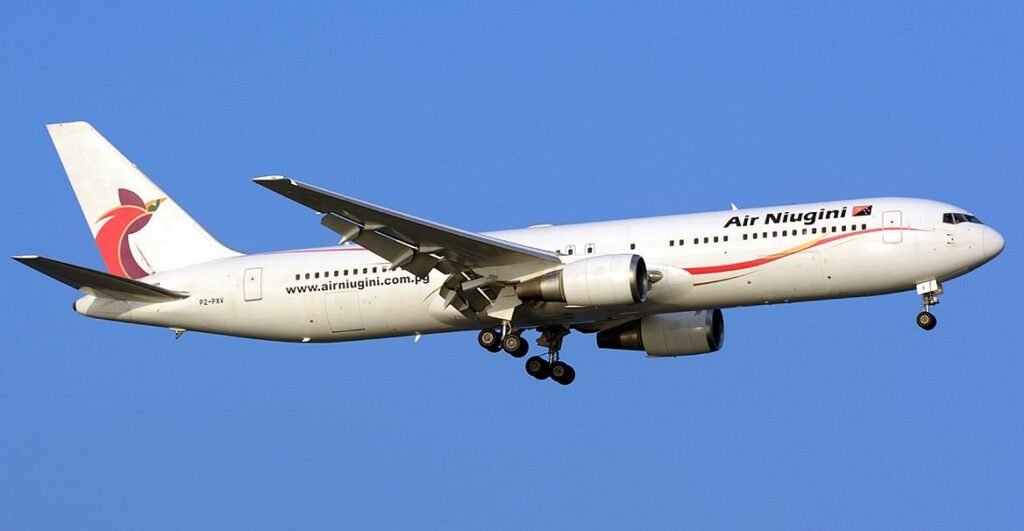
Reaching Bougainville Island, a secluded paradise in the Pacific, is an adventure in itself.
Whether by air or sea, the journey to this breathtaking destination is the first step in experiencing its untouched beauty and rich cultural tapestry.
Available Transportation Methods (Air, Sea)
Air Travel
The most common and efficient way to arrive at Bougainville Island is by air.
Visitors can fly into Buka Airport, the island’s primary gateway, which serves as the hub for domestic flights within Papua New Guinea.
Major airlines provide connections from Port Moresby, the nation’s capital, to Buka, ensuring Bougainville Island is accessible to international travelers.
Once in Buka, a short boat ride or an additional domestic flight is required to reach the main parts of Bougainville Island, including the larger town of Arawa and the historically rich Buin in the south.
Sea Travel
For those seeking an alternative route, sea travel offers a scenic approach to Bougainville Island. Passenger ships and ferries operate from various ports in Papua New Guinea to Bougainville.
This journey can be an extraordinary experience, offering stunning views of the Pacific Ocean and the island’s coastline.
However, it’s important to note that sea travel may be subject to weather conditions and may take significantly longer than flying.
Major Entry Points and Airports
Buka Airport stands as the main entry point for travelers flying into Bougainville Island.
It facilitates the region’s connection to the outside world and serves as a crucial hub for further exploration of the island.
For those continuing to the southern parts of Bougainville, Aropa Airport near Kieta provides a closer gateway, though flights are less frequent and require coordination with domestic schedules.
Visa Requirements and Entry Formalities for International Travelers
Visitors to Bougainville Island must adhere to the visa and entry requirements of Papua New Guinea, as the island is an autonomous region of the country.
Most international travelers need to obtain a visa prior to arrival, which can be applied for at Papua New Guinea diplomatic missions abroad.
Certain nationalities are eligible for visa on arrival or e-Visa options, streamlining the entry process.
It’s essential for travelers to check the latest visa requirements and ensure all paperwork, including return tickets and proof of sufficient funds, is in order before embarking on their journey to Bougainville Island.
Additionally, given Bougainville’s unique political status, staying informed about local regulations and entry formalities is advisable for a smooth travel experience.
Best Time to Visit Bougainville Island
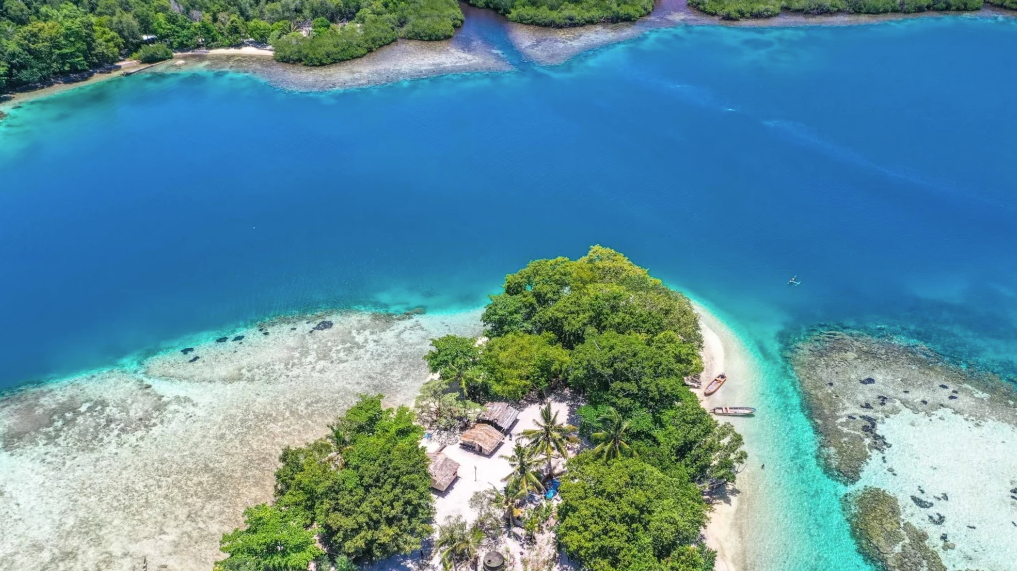
Determining the best time to visit Bougainville Island is key to enjoying all that this stunning destination has to offer, from its lush landscapes and pristine beaches to its rich cultural festivals.
The island’s equatorial climate means warm temperatures year-round, but understanding its seasonal weather patterns can help you plan the perfect trip.
Overview of the Climate and Seasonal Weather Patterns
Bougainville Island enjoys a tropical rainforest climate, characterized by high humidity and significant rainfall throughout the year.
Temperatures are consistently warm, typically ranging from 25°C to 30°C (77°F to 86°F). However, the year can broadly be divided into two main seasons: the wet season and the dry season.
- Wet Season: Running from December through March, this period sees the highest rainfall, with heavy and frequent downpours. While the landscape is at its most lush and rivers are full, some remote areas may become difficult to access due to the rains.
- Dry Season: May to October is generally drier and slightly cooler, making it an ideal time for outdoor activities and exploration. This season offers the best conditions for hiking, snorkeling, and diving, with clearer skies and less rain.
Recommended Months for Travel Based on Interests
For Diving and Snorkeling
The clear waters and vibrant marine life of Bougainville Island are best enjoyed from May to October, during the dry season.
Visibility is at its peak, allowing divers and snorkelers to fully appreciate the underwater coral gardens and the myriad of sea creatures that inhabit them.
For Cultural Festivals
Bougainville Island’s cultural calendar is filled with vibrant festivals that showcase the rich heritage and traditions of its people.
One of the highlights is the Mona Festival in July, a celebration of local customs, dance, and music.
Planning your visit around these cultural events provides a unique glimpse into the island’s community spirit and traditions.
For Nature and Adventure
If your interests lie in exploring the island’s natural beauty and engaging in outdoor adventures, the dry season, particularly June to September, offers the most favorable conditions.
This period is perfect for trekking through the island’s mountainous terrain, visiting its cascading waterfalls, and exploring the lush rainforests without the interruption of heavy rains.
For Relaxation and Beach Activities
For those looking to unwind on the island’s serene beaches, any time of year can be delightful due to the warm temperatures.
However, the months of April, May, and October might offer the best balance between pleasant weather and minimal rainfall, making it ideal for beach relaxation and swimming.
Where to Stay on Bougainville Island
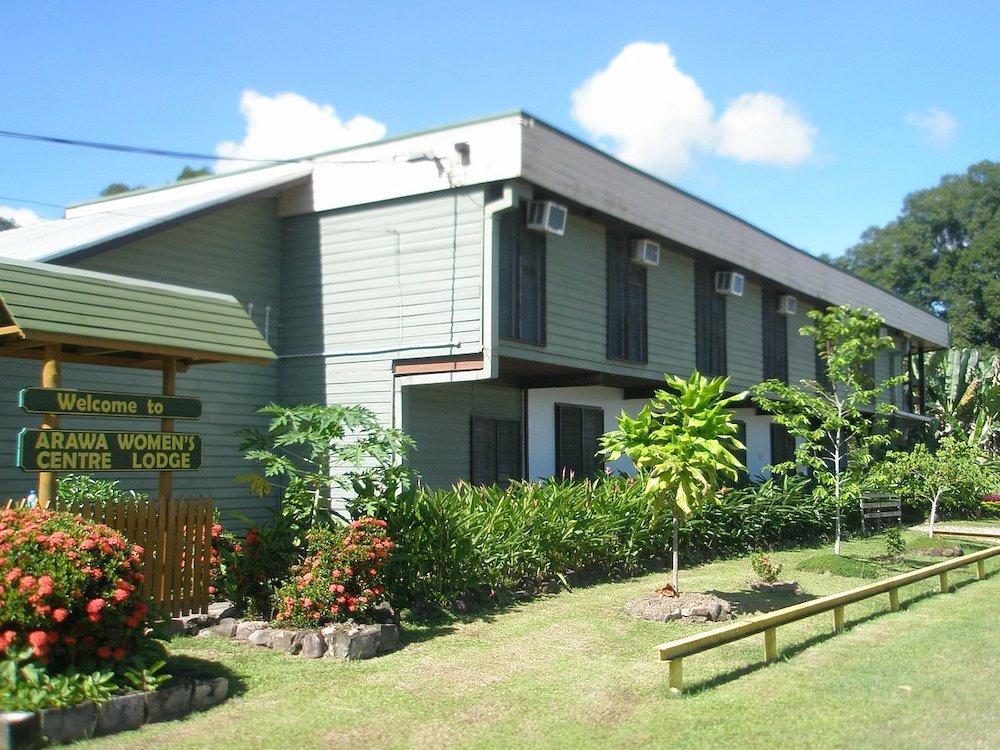
Finding the perfect place to stay is a crucial part of planning your trip to Bougainville Island.
Whether you’re seeking the comfort of a luxury resort, the homeliness of a budget guesthouse, or the uniqueness of an eco-lodge, Bougainville Island offers a small range of accommodation options to suit every preference and budget.
Range of Accommodation Options
Budget Guesthouses
Travelers on a budget will find plenty of guesthouses offering comfortable and affordable accommodations.
These guesthouses are often family-run, providing a warm and authentic Bougainville Island experience.
They offer basic amenities and are a great way to immerse yourself in the local culture and community.
Eco-Lodges
For the eco-conscious traveler, Bougainville Island boasts eco-lodges that are committed to sustainability and environmental preservation.
These lodges offer a rustic yet comfortable experience, often built using traditional materials and techniques.
Staying in an eco-lodge is a fantastic way to connect with nature and support eco-tourism efforts on the island.
Traditional Village Experiences
For an immersive cultural experience, consider staying in a traditional village.
This unique accommodation option allows guests to live alongside local families, learn about their way of life, and participate in daily activities.
It’s a profound way to understand the culture and traditions of Bougainville Island and make lasting connections with its people.
Tips for Booking Accommodation
Peak Season Advice
Bougainville Island’s peak travel season coincides with the dry season from May to October.
Accommodations can fill up quickly during this period, so it’s advisable to book well in advance.
Early booking not only secures your stay but may also offer early bird discounts.
Booking Platforms
Utilizing reputable booking platforms can simplify the process of finding and reserving accommodations on Bougainville Island.
These platforms offer a range of options, customer reviews, and the convenience of online booking.
Additionally, contacting accommodations directly can sometimes yield better rates or package deals not available online.
Consider Your Location
When choosing where to stay, consider the activities and attractions you wish to explore.
Bougainville Island is diverse in its landscapes and experiences, so selecting accommodation that minimizes travel time to your preferred destinations can enhance your overall experience.
Exploring Bougainville Island: Must-See Attractions

Bougainville Island is a treasure trove of natural beauty, rich history, and vibrant culture.
From its rugged mountains and pristine rainforests to its war relics and traditional villages, the island offers a myriad of experiences for every type of traveler.
Here’s your guide to the must-see attractions that make Bougainville Island truly unforgettable.
Detailed Guide to Not-to-Miss Landmarks and Natural Wonders
Panguna Mine
The Panguna mine, once the world’s largest open-cut copper mine, stands as a stark reminder of Bougainville Island’s tumultuous history.
Although no longer in operation, the site tells a story of economic boom, environmental impact, and the quest for autonomy.
Tumpusiong Valley
For nature lovers, the Tumpusiong Valley is a must-visit.
This verdant valley is surrounded by towering mountains and is known for its biodiversity, including rare bird species and exotic flora.
Trekking through the valley offers a glimpse into the untouched beauty of Bougainville Island.
Mount Balbi
As Bougainville Island’s highest peak, Mount Balbi is a challenge for avid hikers.
The mountain is part of an extinct volcano range and offers breathtaking views from its summit.
The hike passes through diverse ecosystems, including mossy cloud forests and alpine grasslands.
Cultural and Historical Sites of Significance
Bougainville World War II Relics
Bougainville Island played a significant role in the Pacific theater of World War II.
The island is dotted with war relics, including downed planes, abandoned artillery, and hidden bunkers.
Tours to these sites offer a poignant look at the island’s past and the resilience of its people.
Nakas Village
To experience the traditional culture of Bougainville, a visit to Nakas Village is essential.
Here, visitors can witness the Bougainvillean way of life, engage with local artisans, and observe traditional practices such as weaving and pottery-making.
Best Beaches and Diving Spots
Pokpok Island
Just off the coast of Bougainville Island, Pokpok Island boasts some of the most beautiful beaches in the region. Its crystal-clear waters and coral reefs make it an ideal spot for snorkeling and relaxation.
Lagoon at Loloho
The lagoon at Loloho is renowned for its stunning underwater landscapes, making it a prime location for diving enthusiasts.
Divers can explore vibrant coral reefs, encounter a variety of marine life, and even dive through wartime shipwrecks that tell a story of the island’s history.
Adventure and Activities in Bougainville
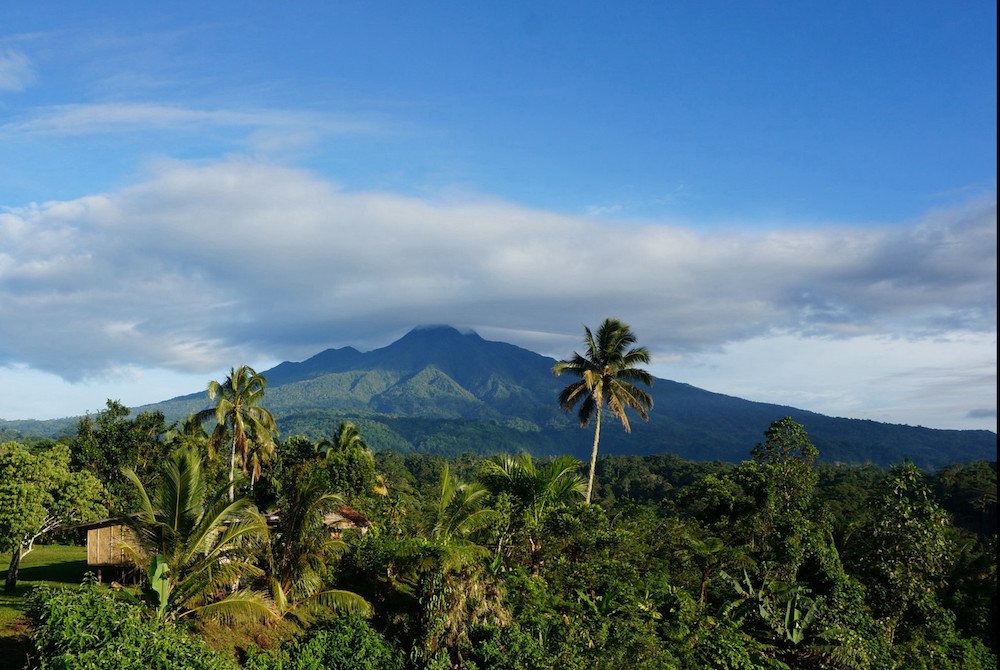
Bougainville Island, with its rugged landscapes, pristine waters, and rich cultural heritage, offers a plethora of activities for the adventurous soul.
From the peaks of its volcanoes to the depths of its coral reefs, the island is a playground for those seeking adventure and cultural immersion.
Overview of Outdoor Activities
Hiking
The diverse terrain of Bougainville Island provides numerous hiking opportunities for all levels of experience.
Trekking up the dormant volcano, Mount Balbi, offers a challenging yet rewarding experience, with stunning panoramic views.
The Tumpusiong Valley and the surrounding rainforests offer easier trails that lead through some of the island’s most beautiful landscapes.
Kayaking
Exploring Bougainville Island by kayak allows adventurers to navigate its serene rivers and coastline at their own pace.
Kayaking excursions offer unique perspectives of the island’s lush landscapes and the opportunity to discover secluded beaches and hidden coves.
Snorkeling and Diving
The coral reefs around Bougainville Island are among the most biodiverse and unspoiled in the Pacific.
Snorkeling and diving here reveal an underwater world teeming with colorful marine life, including numerous species of fish, corals, and even WWII wrecks submerged in the clear waters.
Introduction to Local Tours and Experiences
Cultural Tours
To truly understand Bougainville Island, engaging with its rich culture is a must.
Cultural tours led by local guides offer insights into the island’s traditions, customs, and way of life.
Visitors can participate in traditional ceremonies, learn about the matrilineal society, and even stay in a local village.
War Relics Tour
The history of Bougainville Island is deeply marked by its role in WWII and the subsequent Bougainville conflict.
War relics tours take visitors to significant sites across the island, including abandoned bunkers, downed aircraft, and memorials, providing a powerful glimpse into the island’s past.
Conservation Efforts and How Tourists Can Participate Responsibly
Bougainville Island’s natural beauty and biodiversity are precious resources that require ongoing conservation efforts.
Visitors can contribute to these efforts by engaging in responsible tourism practices, such as:
- Supporting Eco-Tourism: Choosing accommodations and tours that are committed to environmental sustainability helps promote conservation efforts on the island.
- Minimizing Environmental Impact: Simple actions like avoiding single-use plastics, respecting wildlife, and not disturbing natural habitats can make a significant difference.
- Community Engagement: Participating in community-led conservation projects or supporting local initiatives can enhance the positive impact of your visit.
Bougainville’s Culture and Heritage
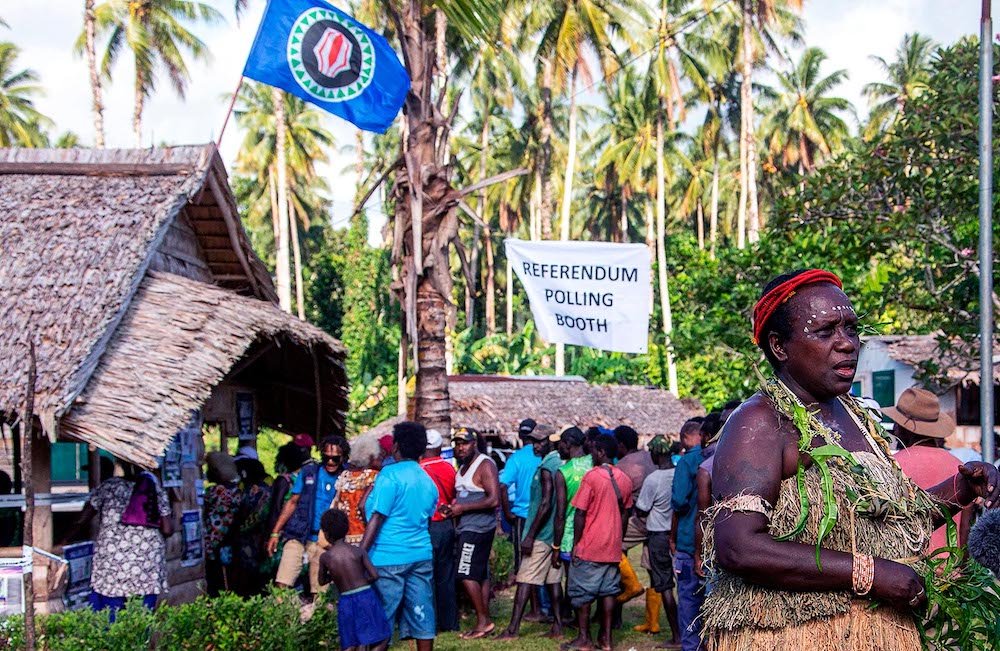
Bougainville Island, with its deep-rooted traditions and complex history, offers a tapestry of cultural experiences that reflect the resilience and vibrancy of its people.
From ancient customs to the modern-day quest for peace and autonomy, the island’s culture and heritage are integral to understanding its unique identity.
Insight into the Local Customs and Traditions
The people of Bougainville Island maintain a strong connection to their customs and traditions, which are deeply woven into the fabric of daily life.
The society is predominantly matrilineal, where lineage and land rights are passed down through the female line.
This structure influences social organization, ceremonies, and the transfer of knowledge and skills.
Traditional practices such as weaving, carving, and storytelling are vital in preserving the island’s cultural heritage.
These arts are not only aesthetically beautiful but serve practical purposes and convey stories and teachings from generation to generation.
Customary ceremonies and rituals still play a significant role in community life, marking important events such as birth, initiation, marriage, and death.
These ceremonies are rich in symbolism and often involve music, dance, and the exchange of traditional currency, like shell money, which remains a valued item for its cultural significance.
Overview of the Bougainville Conflict and Its Impact on the Culture
The Bougainville conflict, which erupted in the late 1980s and lasted for a decade, was a pivotal event in the island’s history, deeply affecting its people and culture.
The conflict arose primarily due to environmental and socio-economic grievances associated with the Panguna mine operations.
It led to significant loss of life and displacement of communities, leaving deep scars on the island’s social fabric.
Despite these challenges, the conflict also highlighted the resilience of the Bougainvillean people and their strong sense of identity and unity.
The peace process and subsequent quest for autonomy have fostered a renewed emphasis on cultural preservation as a cornerstone of nation-building and reconciliation.
Today, cultural heritage plays a crucial role in healing and bringing together diverse communities across the island.
Local Festivals and Events Worth Attending
Bougainville Island’s calendar is punctuated with vibrant festivals and events that celebrate its culture and history, providing an excellent opportunity for visitors to immerse themselves in the local way of life.
- Mona Festival: Held annually in Buka, the Mona Festival is a celebration of Bougainville’s traditional culture, featuring canoe races, traditional music, dance performances, and artisanal crafts. It’s a colorful and joyous event that showcases the rich cultural diversity of the island.
- Bougainville Chocolate Festival: Highlighting the island’s burgeoning cocoa industry, the Bougainville Chocolate Festival celebrates the local cocoa farmers and producers. Visitors can enjoy chocolate tastings, learn about cocoa production, and participate in workshops.
- Peace Day Celebrations: Commemorating the signing of the Bougainville Peace Agreement, Peace Day is a significant event observed island-wide with ceremonies, speeches, and cultural performances. It symbolizes the island’s journey towards peace and self-determination.
Culinary Journey Through Bougainville
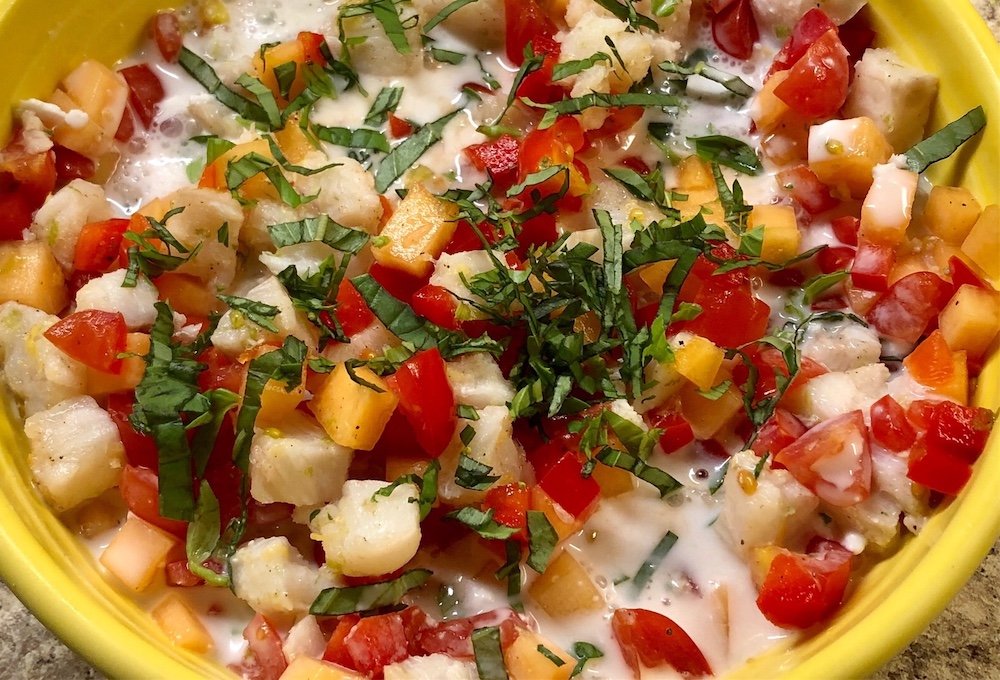
Embarking on a culinary journey through Bougainville Island offers a delicious insight into the island’s culture, traditions, and way of life.
The local cuisine is a reflection of the island’s rich natural bounty, featuring fresh tropical fruits, vegetables, and seafood, complemented by unique preparation methods that have been passed down through generations.
Introduction to Local Cuisine and Must-Try Dishes
Bougainville Island’s cuisine is characterized by its simplicity, freshness, and flavors.
Staple ingredients include root vegetables like taro and sweet potato, a variety of leafy greens, coconut, bananas, and an abundance of fresh fish and seafood.
One of the most traditional cooking methods is the “mumu,” an earth oven where food is slow-cooked over hot stones, resulting in tender, flavorful dishes.
Must-Try Dishes
- Fish cooked in Coconut Milk: A simple yet delicious dish where fresh fish is simmered in rich coconut milk with onions, garlic, and sometimes a touch of chili. It embodies the island’s love for seafood and coconut.
- Taro Pudding: A hearty and comforting dish made from taro root, coconut milk, and sugar, steamed or baked to perfection. It’s a versatile dish that can be enjoyed as a dessert or a savory snack.
- Sago Dumplings: Made from sago palm starch, these dumplings can be sweet or savory and are often filled with banana or fish, offering a glimpse into the traditional use of sago on the island.
Recommendations for Dining Spots
From casual street food stalls to more formal dining options, Bougainville Island caters to a range of culinary preferences.
While the island may not have a vast array of fine dining establishments, the available restaurants and eateries pride themselves on offering fresh, locally sourced dishes that showcase the flavors of the region.
- Street Food: Exploring the local markets and roadside stalls is a must for any food enthusiast. Here, you can try local snacks like fresh fruit, grilled seafood, and sago cakes, offering a taste of Bougainville’s culinary diversity.
- Local Eateries: For a sit-down meal, the island’s eateries and small restaurants serve a variety of local and international dishes. The focus is always on fresh, seasonal ingredients, providing a wholesome and satisfying dining experience.
Information on Local Markets and Food Sourcing for Self-Catering Visitors
For those who prefer to self-cater, Bougainville Island’s local markets are a treasure trove of fresh produce, seafood, and other staples.
Markets in Buka and Arawa are bustling with activity, offering visitors the chance to immerse themselves in local life while selecting ingredients for their culinary creations.
- Buka Market: Located in the island’s northern part, Buka Market is renowned for its wide variety of fresh fish, fruits, and vegetables. It’s an excellent place to interact with local farmers and fishers, learn about the island’s produce, and maybe even pick up a cooking tip or two.
- Arawa Market: In the heart of Arawa, this market is a vibrant spot where locals and visitors alike come to shop for daily necessities and specialty items like fresh cocoa beans, local spices, and handcrafted goods.
Practical Information and Travel Tips for Bougainville Island
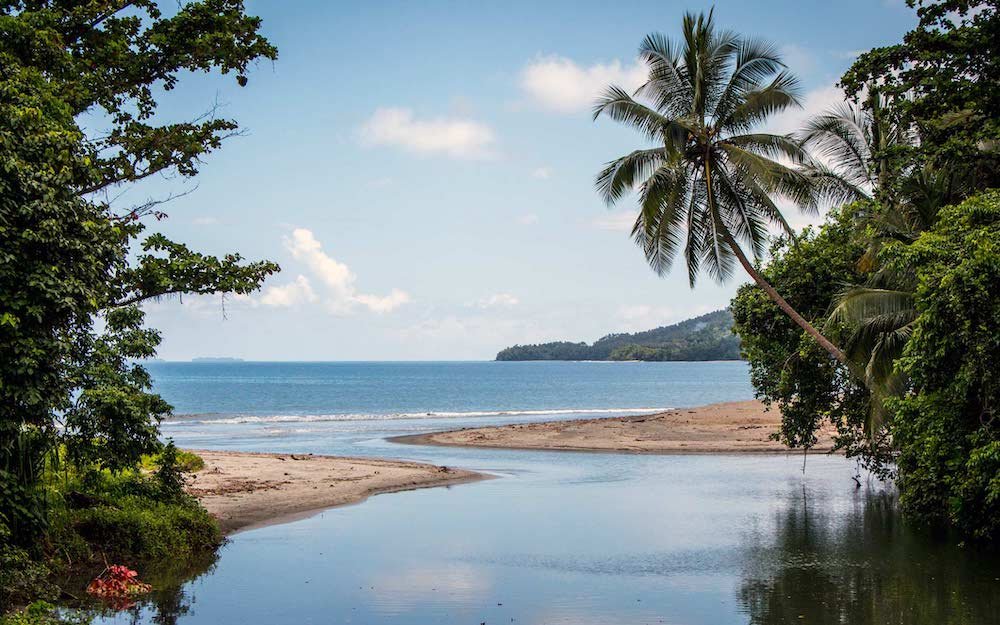
Preparing for a trip to Bougainville Island requires some essential planning, especially regarding health and safety, communication, and finances.
This guide offers practical tips and information to help you navigate these aspects smoothly during your stay on the island.
Health and Safety Tips
Vaccinations
Before traveling to Bougainville Island, consult with a travel medicine specialist to ensure you have all the necessary vaccinations.
Typically recommended vaccinations for Papua New Guinea include hepatitis A, hepatitis B, typhoid, and routine vaccinations such as measles, mumps, and rubella (MMR).
Malaria prophylaxis is also strongly advised due to the presence of malaria on the island.
Local Healthcare Facilities
Healthcare facilities in Bougainville Island are limited, especially in remote areas.
While there are hospitals in Buka and Arawa, they may not offer the same standard of care as those in more developed countries.
It’s crucial to have comprehensive travel health insurance that covers medical evacuation in case of serious illness or injury.
Communication Essentials
Language
The official languages of Bougainville Island are Tok Pisin, English, and Halia, with many communities also speaking their indigenous languages.
English is widely understood in urban areas and tourist spots, making it relatively easy for international visitors to communicate.
Connectivity
Mobile phone coverage and internet access are available in Buka, Arawa, and other major towns, but can be sporadic in more remote areas.
Purchasing a local SIM card upon arrival is recommended for staying connected. Wi-Fi may be available at some hotels and guesthouses, though speeds can vary.
Emergency Contacts
It’s important to have a list of emergency contacts, including local police, medical facilities, and your country’s embassy or consulate (located in Papua New Guinea’s capital, Port Moresby).
Always inform someone of your travel plans, especially if venturing into remote areas.
Currency, Banking, and Daily Expense Guide
Currency
The currency used in Bougainville Island is the Papua New Guinean Kina (PGK).
Cash is king in many parts of the island, especially in rural and remote areas.
It’s advisable to exchange some currency before arrival or withdraw cash at ATMs in Buka or Arawa.
Banking
Banking services, including ATMs and currency exchange, are limited to larger towns.
Plan your finances accordingly, ensuring you have enough cash for your needs, especially when traveling outside of urban centers.
Daily Expense Guide
The cost of living on Bougainville Island can vary widely depending on your travel style.
Budget travelers can get by on around 150-200 PGK per day, while those seeking more comfort or indulgence should budget for 300-500 PGK per day.
These estimates cover accommodation, meals, and basic travel expenses but exclude costs for tours and special activities.
Conclusion:
Bougainville Island emerges as a compelling destination for travelers seeking authenticity, adventure, and a deep connection with nature and culture.
From its rugged mountain peaks and verdant rainforests to the rich tapestry of its history and traditions, Bougainville offers an array of experiences that are as diverse as they are unique.
Bougainville Island is a world apart, boasting unparalleled natural beauty and a vibrant cultural heritage.
The island’s volcanoes, untouched rainforests, and pristine beaches offer spectacular settings for hiking, kayaking, snorkeling, and diving adventures.
The remnants of its tumultuous history, including World War II relics and the Panguna mine, provide poignant insights into the resilience of its people.
Moreover, Bougainville’s traditional customs, ceremonies, and festivals invite visitors to immerse themselves in the local way of life, offering a rare glimpse into the soul of this Pacific paradise.
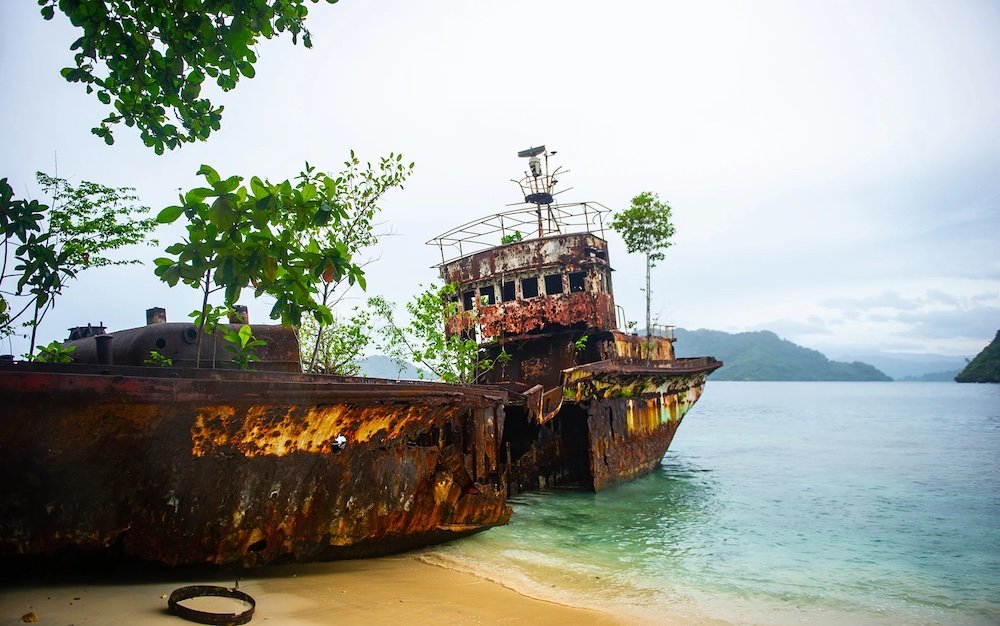
FAQ’s About Bougainville Island:
Is Bougainville Going to Be a Country?
As of my last update in April 2023, Bougainville is on a path that could lead to it becoming an independent country.
In a 2019 referendum, an overwhelming majority of Bougainville’s population voted in favor of independence from Papua New Guinea (PNG).
However, this referendum was non-binding, and the final decision on independence requires negotiation between the leaders of Bougainville and PNG, followed by ratification by the PNG Parliament.
The process towards independence, if agreed upon, is expected to take several years, involving detailed discussions on the terms and conditions of such a move.
What is the New Country in 2027?
As of my last update, there has been no official confirmation that any new country will be formally established in 2027.
The speculation around Bougainville becoming a new country by 2027 could be linked to discussions and negotiations following the 2019 independence referendum.
However, the timeline for Bougainville’s potential independence remains uncertain and is subject to negotiations between Bougainville and the PNG government.
What Caused the Bougainville Crisis?
The Bougainville Crisis, a violent conflict that took place from 1988 to 1998, was primarily caused by socio-economic grievances and environmental damage resulting from the operation of the Panguna copper mine, one of the world’s largest open-pit mines.
The mine was a significant source of revenue for PNG but led to widespread environmental degradation and perceived inequalities, sparking resentment among the local Bougainvillean population.
This resentment escalated into a decade-long armed conflict between Bougainville revolutionary groups and PNG forces, deeply impacting the region’s social fabric and leading to a push for independence.
What Country Does Bougainville Belong To?
Bougainville is currently an autonomous region of Papua New Guinea.
Following the peace agreement in 2001, which ended the Bougainville Crisis, Bougainville was granted a higher degree of autonomy within PNG.
The 2019 independence referendum further set the stage for potential full independence, pending negotiations and legislative action by the PNG Parliament.
What Language Do They Speak in Bougainville?
The primary languages spoken in Bougainville are Tok Pisin, English, and a variety of indigenous languages.
Tok Pisin serves as a lingua franca across Papua New Guinea and Bougainville, while English is also widely used, especially in education, government, and business contexts.
Additionally, there are over 20 indigenous languages spoken throughout Bougainville, reflecting the region’s rich cultural diversity.
What Language Do They Speak in North Bougainville?
In North Bougainville, Tok Pisin and English are widely spoken, similar to the rest of the region.
Additionally, several indigenous languages are spoken in local communities, including Halia, the language of the people around Buka and parts of North Bougainville.
These languages are part of the daily lives of the people and are a crucial part of the region’s cultural identity.
Is Bougainville Safe to Visit?
Bougainville is generally considered safe for travelers, especially those who take standard travel precautions and respect local customs and advice.
Since the end of the Bougainville Crisis and the establishment of the Autonomous Bougainville Government, the region has enjoyed a period of peace and gradual recovery.
However, as with any travel destination, it’s recommended to check current travel advisories, remain aware of your surroundings, and follow guidelines provided by local authorities and tour operators.
Is Bougainville Safe for Travel?
Yes, Bougainville is safe for travel, with the caveat that travelers should always exercise caution and stay informed about the local situation.
The region has made significant strides towards peace and stability since the end of the conflict in 1998.
Tourists are welcomed and encouraged to explore the natural beauty and cultural heritage of the island.
Engaging with local guides and respecting the community’s norms and traditions can enhance safety and the overall travel experience.
Is There Gold in Bougainville?
Yes, there is gold in Bougainville. Apart from the large copper reserves, the Panguna mine, which was a major cause of the Bougainville Crisis, also contains significant gold deposits.
Additionally, alluvial gold mining by local communities has been a source of livelihood for many Bougainvilleans.
The presence of such valuable natural resources has played a central role in the region’s history and continues to influence its economic and environmental landscape.
